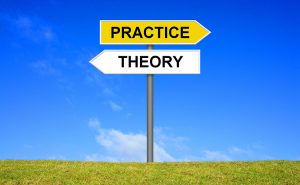 Have you ever wondered about the difference between Webb’s Depth of Knowledge and Bloom’s Taxonomy?
Have you ever wondered about the difference between Webb’s Depth of Knowledge and Bloom’s Taxonomy?
If you are in the educational field, this is something you most likely have been exposed to and are familiar with; if not, this article provides a bit of insight into the concepts. Let’s look further into the differences between these concepts and their relation to course rigor and academic standards alignment.
Bloom’s Taxonomy
First, let’s look at Bloom’s Taxonomy…
Figure 1: Bloom’s Taxonomy, Original Framework
Benjamin Bloom worked with a group of educators in 1956 to classify the levels of intellectual behaviors. The original framework (Figure 1) involves the levels of cognitive taxonomy starting with knowledge (simplest tasks) and moving up the levels through comprehension, application, analysis, synthesis, and finally to the top level of evaluation (most complex tasks).
Figure 2: Bloom’s Taxonomy, Updated Framework
In 2001, the original taxonomy was updated by Lorin Anderson and David Krathwohl, to the current framework (Figure 2). The terms changed from nouns to verbs, such as knowledge to remember and comprehension to understand. However, the essential meaning of the concepts did not change. One of the biggest change is switching the order of Evaluation/Evaluate to come after Synthesis/Create (Armstrong, 2017). As before, these six categories start from the simplest (remember), to the most complex (create).
As you move through the categories, you have a better picture for the level of cognitive rigor involved in a learning. The breakdown of each category is shown below:
- Remember involves being able to recall, defining, or labelling.
- Understand is to summarize or classify.
- Apply requires some level of implementation or to follow a procedure.
- Analyze, breaks down parts of a concept for deeper analysis.
- Evaluate is critiquing or making a judgement based on research.
- Create is to develop something new based on all the learning.
One thing to keep in mind is that Bloom’s Taxonomy builds on each other. In other words, a learner must master the lower levels before moving on to the next. Bloom’s Taxonomy is a framework to assist in instruction and when measuring the cognitive rigor of a lesson.
Webb’s Depth of Knowledge (DoK)
Depth of Knowledge or DoK is another type of framework used to identify the level of rigor for an assessment. In 1997, Dr. Norman Webb developed the DoK to categorize activities according to the level of complexity in thinking. The creation of the DoK stemmed from the alignment of standards to assessments. Standardized assessments measured how students think about a content and the procedures learned but did not measure how deeply students must understand and be aware of a learning so they can explain answers and provide solutions, as well as transfer what was learned in real world contexts (Francis, 2017).
Essentially, the goal of DoK is to establish the context—the scenario, the setting, or the situation—in which students express the depth and extent of the learning (Francis, 2017).
This framework consists of 4 levels, level 1 being the simplest and level 4 being the most complex.
Figure 3: Webb’s Depth of Knowledge
- Level 1 (Acquired knowledge) involves recall and reproduction. Remembering facts or defining a procedure.
- Level 2 (Knowledge Application) are skills and concepts. Students use learned concepts to answer questions.
- Level 3 (Analysis) involves strategic thinking. Complexity increases here and involves planning, justification, and complex reasoning. Explains how concepts and procedures can be used to provide results.
- Level 4 (Augmentation) is extended thinking. This requires going beyond the standard learning and asking, how else can the learning be used in real world contexts.
Differences and Application?
The major difference between these two conceptual frameworks is what is being measured. Bloom’s Taxonomy measures the cognitive level students are expected to show in order to prove a learning experience occurred. While the DoK is focused more on the context—the scenario, the setting, or the situation—in which students are expected to express the learning. Bloom’s is better used in measuring the instruction, objective, or cognitive rigor; while DoK is better used in measuring the actual assessment itself. In other words, Bloom’s provides the instructional framework, while DoK analyzes the specifics of the assignments. Also, Bloom’s Taxonomy requires that students master the lower levels of cognition before moving onto the next. So, if the objective is to use a mathematical formula (Application), they first must be able to identify that formula and its basic purpose (Remember and Understand). This might mean that the objectives are given in incremental steps to show the progression of learning. In DoK, when measuring the assessments, students are moving fluidly through all the levels. In the same example, while using a mathematical formula to solve a problem, students are recalling the information or formula (DoK 1) in order to solve the problem (DoK 2 & DoK 3). Depending on the complexity of the problem to be solved, the learning might transition into DoK 4.
What do you think?
This is how I interpret the major differences between the two concepts. I’m sure there are better ways to clarify the explanation or even more appropriate examples that you might provide. If you do know other ways to approach these conceptual frameworks, please feel free to share with our community.
References
Armstrong, P. (2017). Blooms taxonomy. Retrieved from https://cft.vanderbilt.edu/guides-sub-pages/blooms-taxonomy/
Francis, E. (2016). What exactly is depth of knowledge. Retrieved from http://edge.ascd.org/blogpost/what-exactly-is-depth-of-knowledge-hint-its-not-a-wheel
